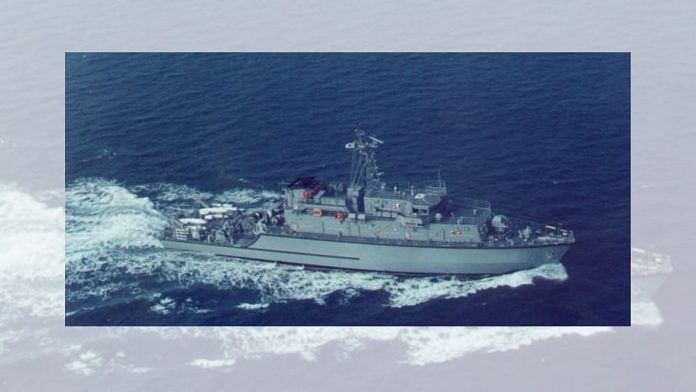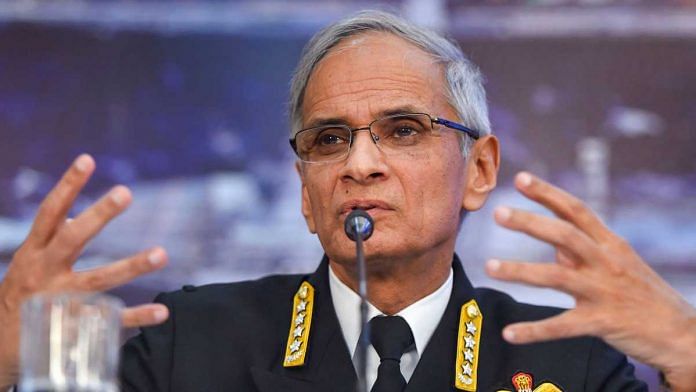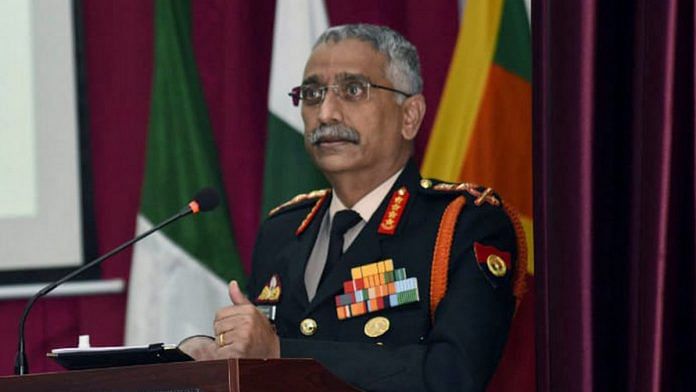
New Delhi: The Navy is looking at leasing an unspecified number of mine counter measure vessels (MCMVs) and naval utility helicopters (NUHs) to fill a critical gap even as it pursues a larger contract for such systems to be made in India with foreign collaboration, ThePrint has learnt.
The Navy, which has taken on lease two Sea Guardian drones from a US firm besides a logistics ship from an Indian private firm for travel between Kochi and Lakshadweep, is looking at leasing certain equipment, sources in the defence and security establishment said.
It took twoi months from the movement of the file for the drones to arrive in India.
The drones were leased while India pursues a larger tri-service procurement of 30 lethal Predator drones from the US.
Talking about future leasing plans, a Navy source told ThePrint, “We have sought information for possible lease of MCMVs. We are actively looking at getting them.”
The source added that the force is looking at the option of leasing equipment wherever there is a capability gap and the time to overcome it takes longer than what is convenient.
“The leasing is not just for training and familiarisation process. There are certain areas where there is a huge capability gap. While the larger procurement process is on to fill the gaps, leasing of such equipment can be used in the interim period,” the source said.
Giving the example of MCMVs that are used to clear harbours and other critical areas of mines laid by enemy submarines and vessels, the source said countries like Russia, South Korea and even the US have such equipment which can be taken on lease.
At one point, the Navy had 12 of them, but now have zero now and are dependent on kits fitted on smaller ships to counter the threat.
The Navy has been unsuccessfully trying to procure these vessels since 2005. Attempts to procure MCMVs from South Korea’s Kangnam Corporation failed after the company was hit with controversy twice, ultimately leading to the cancellation of the project.
The first controversy broke during the UPA government when allegations that the firm had appointed ‘consultants’ for the contract, in a violation of Indian procurement rules, surfaced. The firm came back into the picture a second time when Manohar Parrikar was defence minister. It was shortlisted to tie up with Goa Shipyard Ltd (GSL) for the contract.
However, when Nirmala Sithraman became defence minister, she cancelled the contract after the company failed to commit fully on Transfer of Technology (ToT).
Also read: Why Indian Navy is getting a camouflage uniform like the Army and Air Force
Other lease plans
Sources said NUHs could also be taken on lease under the Strategic Partnership (SP).
Addressing his annual press conference Thursday, Navy chief Admiral Karambir Singh had indicated the force is not looking at the NUHs being offered by state-run Hindustan Aeronautics Limited.
Replying to a query from ThePrint, Admiral Singh said the NUHs are being pursued under SP, which is aimed at providing an impetus to private defence players.
The Navy, which was in talks with HAL over the helicopter deal worth USD 3 billion, is no longer keen on acquiring the aircraft.
Also read: Naval helicopters will be Modi govt’s first challenge in its ‘atmanirbhar’ push in defence
Navy firm on third aircraft carrier
Admiral Singh has strongly come out in support of a third aircraft carrier, saying it is needed as the Indian economy grows towards the USD 5 trillion goal.
He said the Navy will formally move the proposal to the government for a third aircraft carrier after gathering the technical information sought from various countries.
“As the Navy, we are absolutely clear of the utility of the carrier. This is because air operations are integral to naval operations, and air power at sea is required since the Navy is all about reach and sustenance,” he said.
He added: “If you are a nation that is aspiration and you want to become a USD 5 trillion economy shortly and you want to do well, you will have to go outwards and seek the world. The nation does not want to be navy tethered to shore. For that aircraft carriers are absolutely necessary.”
ThePrint had reported in February that the Navy is firm on its plans for a third aircraft carrier despite Chief of Defence Staff (CDS) General Bipin Rawat’s scepticism.
The Indian Navy currently operates aircraft carrier INS Vikramaditya, while INS Vikrant is under construction in Cochin and is due for commissioning in 2022.
Both vessels have a displacement (measure of a vessel’s weight) of 45,000 tonnes each and the Navy is keen on a third vessel of higher displacement.
Also read: Engine, design deficiencies — Third crash puts Russian MiG-29K back in focus


















 Commissioned in 2016
Commissioned in 2016


























































